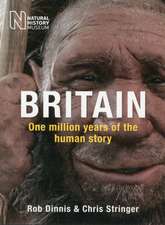Neighbourhood and Community in Paris, 1740–1790: Cambridge Studies in Early Modern History
Autor David Garriochen Limba Engleză Paperback – 7 aug 2002
Din seria Cambridge Studies in Early Modern History
-
 Preț: 197.95 lei
Preț: 197.95 lei - 14%
 Preț: 737.21 lei
Preț: 737.21 lei -
 Preț: 421.39 lei
Preț: 421.39 lei -
 Preț: 442.60 lei
Preț: 442.60 lei -
 Preț: 357.37 lei
Preț: 357.37 lei -
 Preț: 424.87 lei
Preț: 424.87 lei -
 Preț: 281.88 lei
Preț: 281.88 lei - 14%
 Preț: 681.43 lei
Preț: 681.43 lei -
 Preț: 345.85 lei
Preț: 345.85 lei -
 Preț: 426.99 lei
Preț: 426.99 lei -
 Preț: 288.04 lei
Preț: 288.04 lei -
 Preț: 338.05 lei
Preț: 338.05 lei -
 Preț: 325.50 lei
Preț: 325.50 lei -
 Preț: 290.06 lei
Preț: 290.06 lei -
 Preț: 354.97 lei
Preț: 354.97 lei -
 Preț: 241.99 lei
Preț: 241.99 lei -
 Preț: 288.04 lei
Preț: 288.04 lei - 14%
 Preț: 682.09 lei
Preț: 682.09 lei -
 Preț: 296.34 lei
Preț: 296.34 lei -
 Preț: 288.62 lei
Preț: 288.62 lei -
 Preț: 309.10 lei
Preț: 309.10 lei -
 Preț: 425.26 lei
Preț: 425.26 lei -
 Preț: 339.37 lei
Preț: 339.37 lei -
 Preț: 284.29 lei
Preț: 284.29 lei -
 Preț: 325.12 lei
Preț: 325.12 lei -
 Preț: 425.85 lei
Preț: 425.85 lei -
 Preț: 438.81 lei
Preț: 438.81 lei -
 Preț: 388.11 lei
Preț: 388.11 lei -
 Preț: 288.15 lei
Preț: 288.15 lei -
 Preț: 394.87 lei
Preț: 394.87 lei -
 Preț: 322.79 lei
Preț: 322.79 lei -
 Preț: 316.90 lei
Preț: 316.90 lei - 14%
 Preț: 680.77 lei
Preț: 680.77 lei -
 Preț: 287.66 lei
Preț: 287.66 lei -
 Preț: 375.47 lei
Preț: 375.47 lei - 14%
 Preț: 760.68 lei
Preț: 760.68 lei
Preț: 343.35 lei
Nou
Puncte Express: 515
Preț estimativ în valută:
65.70€ • 68.60$ • 54.37£
65.70€ • 68.60$ • 54.37£
Carte tipărită la comandă
Livrare economică 04-18 aprilie
Preluare comenzi: 021 569.72.76
Specificații
ISBN-13: 9780521522311
ISBN-10: 0521522315
Pagini: 292
Dimensiuni: 162 x 239 x 20 mm
Greutate: 0.43 kg
Editura: Cambridge University Press
Colecția Cambridge University Press
Seria Cambridge Studies in Early Modern History
Locul publicării:Cambridge, United Kingdom
ISBN-10: 0521522315
Pagini: 292
Dimensiuni: 162 x 239 x 20 mm
Greutate: 0.43 kg
Editura: Cambridge University Press
Colecția Cambridge University Press
Seria Cambridge Studies in Early Modern History
Locul publicării:Cambridge, United Kingdom
Cuprins
List of illustrations; List of tables and graphs; Acknowledgements; Abbreviations; Introduction; 1. The primacy of neighbourhood and the local community; 2. The family; 3. Work; 4. Religion; 5. Recreation and leisure sociability; 6. The evolution of the local community; Conclusion; Select bibliography; Index/glossary.
Descriere
A picture of pre-Revolutionary Paris as a structured local community based on neighbourhood ties.














